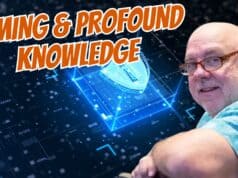
My guest for episode #183 is Scott Sambucci, who I met at the 2012 Lean Startup Conference. Scott is author of an excellent book, Startup Selling: How to sell if you really, really have to and don't know how. Scott is also founder of SalesQualia, a firm that helps people improve sales performance. His latest project is the Sales Model Canvas, an online tool.
Scott and I talk about getting better at sales (something I've honestly struggled with, as an engineer, during my time with KaiNexus). Scott talks about how “sales is a process,” what some of the biggest mistakes people can make with sales, what some common “vanity metrics” are (to be avoided), and how to look out for “vampires and gatekeepers” as you sell.
For a link to this episode, refer people to www.leanblog.org/183.
For earlier episodes, visit the main Podcast page, which includes information on how to subscribe via RSS or via Apple Podcasts.
Podcasts Sponsored by KaiNexus
If you have feedback on the podcast, or any questions for me or my guests, you can email me at leanpodcast@gmail.com or you can call and leave a voicemail by calling the “Lean Line” at (817) 372-5682. Please give your location and your first name. Any comments (email or voicemail) might be used in follow ups to the podcast.
What do you think? Please scroll down (or click) to post a comment. Or please share the post with your thoughts on LinkedIn – and follow me or connect with me there.
Did you like this post? Make sure you don't miss a post or podcast — Subscribe to get notified about posts via email daily or weekly.
Check out my latest book, The Mistakes That Make Us: Cultivating a Culture of Learning and Innovation:










Excellent podcast, Mark. Like you, I have had to learn how to “sell” and have really enjoyed the learning process.
It’s safe to say that talking to customers and explaining how Gemba Academy may add value to their organization is the favorite part of my day!
I have also learned a lot from guys like Dan Pink (To Sell is Human) and I highly recommend anyone (no matter their job) pick this book up as well since we are all, indeed, in sales!
Finally, I definitely agree with Scott’s tip on the power of picking up the phone! Sending emails is so “convenient” but, really, it’s used as a crutch by most who simply lack the courage to engage in real conversation. Nothing beats talking to people.
One question I’d love to ask Scott (if he’s reading this) is what his thoughts are on the different CRMs out there.
We use Highrise but are looking at others like the big elephant, Salesforce. But there is something about the simplicity and elegance of Highrise that we absolutely love. Plus, since HR doesn’t offer them, we don’t get lost in all the useless “vanity” metrics!
Hi Ron – Thanks for the comment. I’m a bit down on CRMs in general right now. I’ve used Salesforce with my sales teams, and use it now with SalesQualia. It’s gotten too difficult to sensibly use on day-to-day basis.
Most salespeople spend their day in front of email/on the phone, so any CRM is not part of daily workflow except to find contacts and review previous emails/conversation notes. The reporting function is good, IF IF IF the sales team is diligent about logging opportunities and the organization is serous about enforcing definitions of opportunity advances.
Search tools have improved drastically across the board since Salesforce first launch (was Gmail even available 10 years ago?). Tools like Synata enable you to search “all your clouds). Over the past six months, I’ve migrated to a combination of Basecamp, Evernote, and Gmail, and Google Calendar for tracking opportunities and my next actions. I like Basecamp b/c you can include your clients in the interaction when you post documents and key information. This gives a sense of “team” during the sales process, instead of shipping large attachments that always seem to get lost.
So I’d say, for now, stay as light as you can with a formal CRM until it is really, really painful. And be super diligent about interviewing your sales team about their opportunities and pipeline. You’ll know when it’s time to dive into a heavy duty CRM.
Hope that helps.
More on the CRM front… Case in point… I just received a marketing email from Hoopla:
“Do you have trouble keeping the data in your CRM system accurate and up to date?
“If so, you might be interested in reading a Sales Gamification case study, which explains how Glassdoor, the online career site, is using game mechanics to drive Salesforce user adoption.”
Uh huh…. Let’s motivate sales people to use their CRM so they can close sales for which they receive commission…
Yes, this is a problem.
Thanks, Scott. I have my qualms about gamification. I’m of the school that says extrinsic motivation (even non-monetary) saps and replaces intrinsic motivation… then you’re on the hamster wheel of always having to provide more incentives.
I’d prefer Lean root cause analysis… “why are salespeople not adopting Salesforce?”
Isn’t the commission (I won’t get into a discussion about pros and cons of sales commissions) supposed to be the primary extrinsic motivation? You now have to add additional extrinsic motivations???
Here’s the link to the Case Study BTW: http://fun.hoopla.net/acton/form/6292/0006:d-0005/0/index.htm